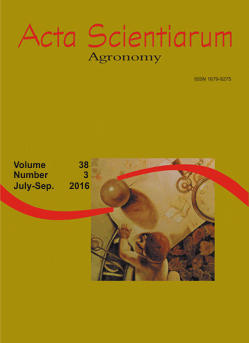<b>Extractant efficiency in the solubilization of alternative sources of potassium
Resumo
Knowledge of a rock’s composition allows for inferences regarding several properties, ranging from its physical characteristics to its solubility. This study aimed to evaluate the use of different extractants to solubilize the K present in rocks as a potential source of nutrients and the effects of extractant contact time and temperature on rock solubilization. Samples of two rocks and a mineral concentrated from a granitic rock were treated with ammonium dihydrogen phosphate (NH4(H2PO4)), calcium dihydrogen phosphate (Ca(H2PO4)2), sodium hydroxide (NaOH) and water (control). Sample-extractant treatments were performed using a water bath shaker at temperatures of 25 and 50°C for periods of 3, 7, 10, 20, and 30 days. The amounts of K extracted from rocks using the extractants were in the following order: NH4H2PO4>Ca(HPO4)2>NaOH>water. The sequence of K release (ppm) based on the rocks studied was as follows: nepheline syenite>green banded argillite>concentrated biotite. Increasing the extractant contact time and temperature enhanced the solubilized K content.
Downloads
DECLARAÇÃO DE ORIGINALIDADE E DIREITOS AUTORAIS
Declaro que o presente artigo é original, não tendo sido submetido à publicação em qualquer outro periódico nacional ou internacional, quer seja em parte ou em sua totalidade.
Os direitos autorais pertencem exclusivamente aos autores. Os direitos de licenciamento utilizados pelo periódico é a licença Creative Commons Attribution 4.0 (CC BY 4.0): são permitidos o compartilhamento (cópia e distribuição do material em qualqer meio ou formato) e adaptação (remix, transformação e criação de material a partir do conteúdo assim licenciado para quaisquer fins, inclusive comerciais.
Recomenda-se a leitura desse link para maiores informações sobre o tema: fornecimento de créditos e referências de forma correta, entre outros detalhes cruciais para uso adequado do material licenciado.




















































